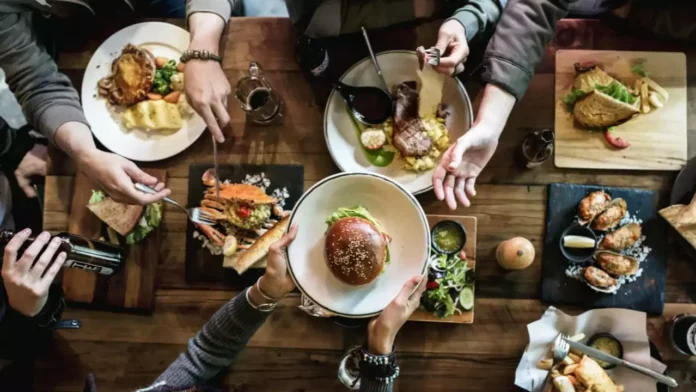The resurgence in the hospitality industry presents a fresh hurdle for India’s upscale restaurants. With patrons increasingly savoring the in-dining experience, the average duration spent at a table has extended by approximately an hour. This extension has led to a decrease in table turnover, prompting some establishments to implement time slots.
“Dine-in demand has been very robust. An average 50 minutes for a weekday lunch has now become one-and-a-half hours or one hour and forty-five minutes,” said Anjan Chatterjee, managing director of Speciality Restaurants, which owns the chains Mainland China and Oh! Calcutta. “For dinner, it can run up to two hours or even some more.”
According to restaurant owners, this shift occurred following the easing of pandemic-induced intermittent shutdowns and restrictions on operating hours.
“A two-course meal of the main course and desserts have turned into a four-course meal, with drinks and after-meal coffee,” said Saurabh Khanijo, managing director of fine-dine Asian cuisine restaurant Kylin.
“This is the biggest shift we have seen after Covid.” According to Riyaaz Amlani, managing director at Impresario Entertainment & Hospitality, which owns restaurant chains Social and Smoke House Deli, the frequency of customers too has increased.
“On an average, there’s a 15 percent increase in frequency and 15% increase average per cover,” said Amlani, attributing the trend to the inherent desire to socialise and grow one’s network, instead of being closeted at home.
As per industry executives in the hospitality sector, certain restaurants have opted to designate specific time slots and seating arrangements for their customers.
“There are restaurants that have started imposing a time limit, as some people are over-staying,” said GS Kohli, owner of Pritam Group of Hotels & Restaurants, which operates Tori and Grandmama’s Cafe, among other restaurants.
“You try making a booking at any of the fine-dining restaurants and they tell you clearly that you only have an hour or an hour and half,” said Kohli. “You can’t blame them…If a restaurant is open from, say, 7:30 pm to 12.30 am for dinner, it has to do 2-2.5x the turnover.” Then there are overhead costs to deal with.
“Extended dining hours also means lights and air-conditioners stay on. We are contemplating putting up signs like restricted lunch hours in our restaurant, like in Europe. But given the Indian hospitality culture, we are hesitant,” said another gourmet restaurant owner who runs outlets in Bengaluru, Delhi-NCR and Goa. He requested not to be named.
In the previous fiscal year, the food services market in India experienced a 53% decline, as reported by the National Restaurant Association of India (NRAI). This significant downturn led to the closure of over 25% of food business operations. Although the NRAI’s report for the current year is pending, individual restaurant chains have indicated a positive trend for the ongoing year, signaling potential recovery in the sector.
Zorawar Kalra, who serves as the managing director of Massive Restaurants, overseeing establishments such as Farzi Cafe and Masala Library, reported that December has emerged as the most successful month of the year. During this period, there has been an increase in the size of dining groups and higher average spending per customer. Pradeep Shetty, the president-elect of the Federation of Hotels & Restaurants Association of India and Hotel & Restaurant Association (Western India), highlighted a significant shift in dining habits. He noted that the frequency of people dining out has surged, rising from approximately once a month in pre-pandemic years to two or three times in a fortnight now.





